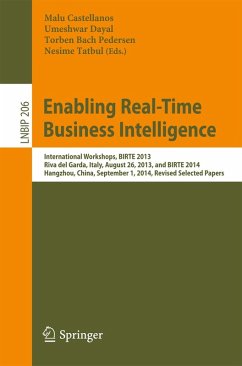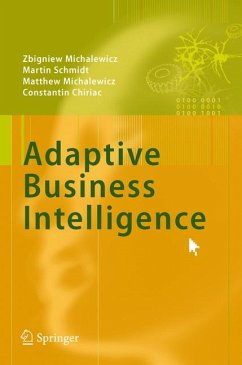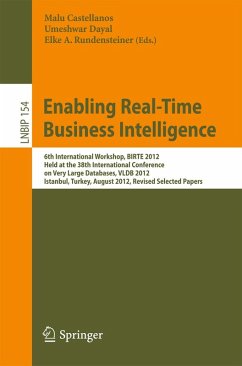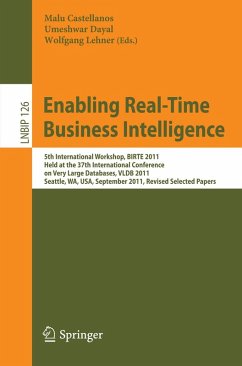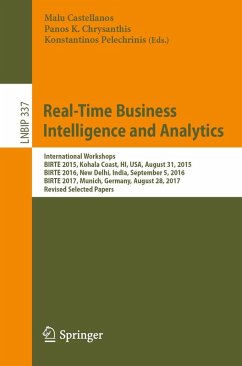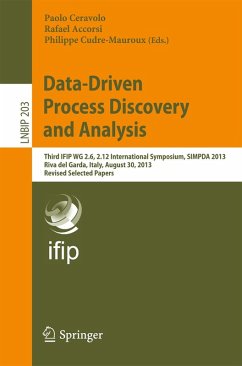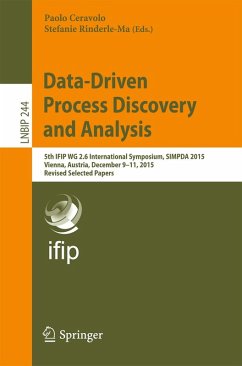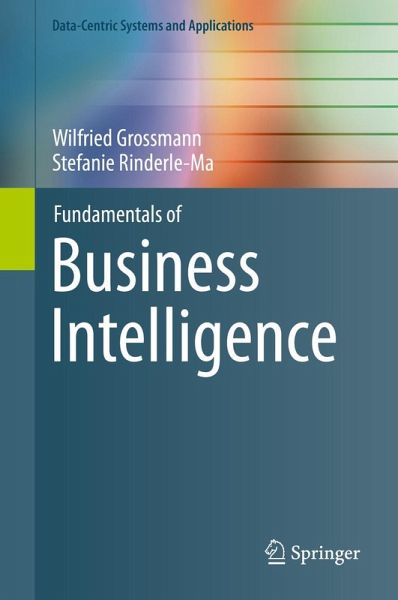
Fundamentals of Business Intelligence (eBook, PDF)
Versandkostenfrei!
Sofort per Download lieferbar
40,95 €
inkl. MwSt.
Weitere Ausgaben:

PAYBACK Punkte
20 °P sammeln!
This book presents a comprehensive and systematic introduction to transforming process-oriented data into information about the underlying business process, which is essential for all kinds of decision-making. To that end, the authors develop step-by-step models and analytical tools for obtaining high-quality data structured in such a way that complex analytical tools can be applied. The main emphasis is on process mining and data mining techniques and the combination of these methods for process-oriented data.After a general introduction to the business intelligence (BI) process and its const...
This book presents a comprehensive and systematic introduction to transforming process-oriented data into information about the underlying business process, which is essential for all kinds of decision-making. To that end, the authors develop step-by-step models and analytical tools for obtaining high-quality data structured in such a way that complex analytical tools can be applied. The main emphasis is on process mining and data mining techniques and the combination of these methods for process-oriented data.
After a general introduction to the business intelligence (BI) process and its constituent tasks in chapter 1, chapter 2 discusses different approaches to modeling in BI applications. Chapter 3 is an overview and provides details of data provisioning, including a section on big data. Chapter 4 tackles data description, visualization, and reporting. Chapter 5 introduces data mining techniques for cross-sectional data. Different techniques for the analysis of temporal data are then detailed in Chapter 6. Subsequently, chapter 7 explains techniques for the analysis of process data, followed by the introduction of analysis techniques for multiple BI perspectives in chapter 8. The book closes with a summary and discussion in chapter 9. Throughout the book, (mostly open source) tools are recommended, described and applied; a more detailed survey on tools can be found in the appendix, and a detailed code for the solutions together with instructions on how to install the software used can be found on the accompanying website. Also, all concepts presented are illustrated and selected examples and exercises are provided.
The book is suitable for graduate students in computer science, and the dedicated website with examples and solutions makes the book ideal as a textbook for a first course in business intelligence in computer science or business information systems. Additionally, practitioners and industrial developers who are interested in the concepts behind business intelligence will benefit from the clear explanations and many examples.
After a general introduction to the business intelligence (BI) process and its constituent tasks in chapter 1, chapter 2 discusses different approaches to modeling in BI applications. Chapter 3 is an overview and provides details of data provisioning, including a section on big data. Chapter 4 tackles data description, visualization, and reporting. Chapter 5 introduces data mining techniques for cross-sectional data. Different techniques for the analysis of temporal data are then detailed in Chapter 6. Subsequently, chapter 7 explains techniques for the analysis of process data, followed by the introduction of analysis techniques for multiple BI perspectives in chapter 8. The book closes with a summary and discussion in chapter 9. Throughout the book, (mostly open source) tools are recommended, described and applied; a more detailed survey on tools can be found in the appendix, and a detailed code for the solutions together with instructions on how to install the software used can be found on the accompanying website. Also, all concepts presented are illustrated and selected examples and exercises are provided.
The book is suitable for graduate students in computer science, and the dedicated website with examples and solutions makes the book ideal as a textbook for a first course in business intelligence in computer science or business information systems. Additionally, practitioners and industrial developers who are interested in the concepts behind business intelligence will benefit from the clear explanations and many examples.
Dieser Download kann aus rechtlichen Gründen nur mit Rechnungsadresse in A, B, BG, CY, CZ, D, DK, EW, E, FIN, F, GR, HR, H, IRL, I, LT, L, LR, M, NL, PL, P, R, S, SLO, SK ausgeliefert werden.




